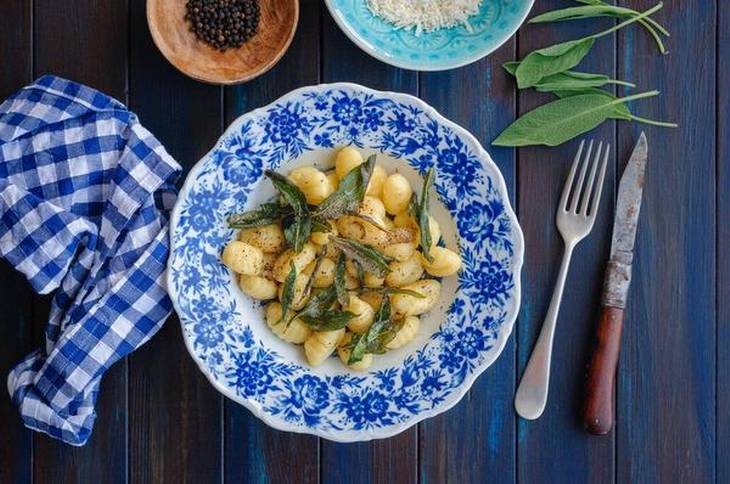Jamie Cooks Italy is full of delectable food pictures, and several of sweet grannies
Everybody has a grandmother and food story to tell. I, sadly, don’t have any. I didn’t get to meet my Bengali granny much, and my U.P. dadi spent more time in the fields than in the kitchen. She was paralysed, and a group of able-bodied men used to carry her on a cot to the wheat fields every day. And on special days she liked to eat halwa — cooked with oodles of ghee.
I have been thinking of grandmothers and food while reading Jamie Cooks Italy — From The Heart of the Italian Kitchen. It is a beautiful book full of delectable food pictures — and several of sweet grannies. Jamie Oliver, the celebrity chef, is travelling through Italy, meeting nonnas and mammas and hearing about — and trying out — different kinds of recipes.
“I have had the honour of cooking with these wonderful women and learning some of their secrets,” he writes. I plan to test out Nonna Teresa’s gnocchi recipe. From Campo de’ Fiori in Rome, her family opened the popular Settimio trattoria in 1932. Jamie went there on a Thursday — the day she makes her famous potato gnocchi, he tells us.
Semolina tear-drops
Unlike the recipes followed in most restaurants, Nonna Teresa doesn’t use eggs for her gnocchi. She believes that if cooked fresh, there is no need for eggs. And the fresher the mix, the lighter is the potato dumpling.
For this, you need to boil and then mash some potatoes. Mix with flour, salt, pepper and nutmeg and knead well. Roll it out like a long sausage, and then cut into small pieces.
Use a fork to add grooves to each piece, for those ruts will help the sauce stick to the gnocchi, Jamie tells us. Now boil them for a few minutes in hot water. When they come to the surface of the water, they are ready. Take them out, toss with melted butter and finely grated Parmesan cheese and serve with something like ragu sauce.
Nonna Mercedes’s recipe for chnéffléné, or semolina tear-drop dumplings, is similar. From Gressoney-Saint-Jean in Aosta Valley, she is one of the few remaining direct descendants of the Walsers, “a community with both Swiss ancestry and Germanic roots that chose to settle in Italy”, Jamie writes. Chnéfflénéis a traditional Walser recipe.
Take some semonlina, flour, nutmeg, eggs and milk. Whisk eggs and milk. Add the flour, and then the semolina, sea salt, black pepper and nutmeg. Boil salted water. Put a colander in cold water (it prevents the batter from sticking to the surface) and then run the batter through the holes, dropping little tear-drop shaped dumplings into the boiling water. It will cook in two or three minutes. Serve the dumplings with the sauce of your choice.
Stewed lamb secrets
There are some wonderful meat and fish dishes that the grannies have shared with Jamie. He gives the details of a lamb stew that he ate with the family of Nonna Rosina of Little Lucanian dolomites, Basilicata.
“Back in the day, Nonna Rosina was a shepherd herself, and she still likes to walk with the sheep when her health allows,” he says. He also meets Nonna Elena of Pitigliano, Tuscany, who had survived World War II by hiding from the Nazis and their supporters in caves near the town. She shares a recipe for a Jewish dish of artichokes stuffed with meat and herbs, fried and braised in tomato sauce.
Apart from the mouth-watering recipes, I like the bit of advice that Nonna Linda of Locorotondo, Puglia, gives the chef. “If you want to have fun, live for today. Don’t wait for tomorrow,” she says. I think I shall do just that.








